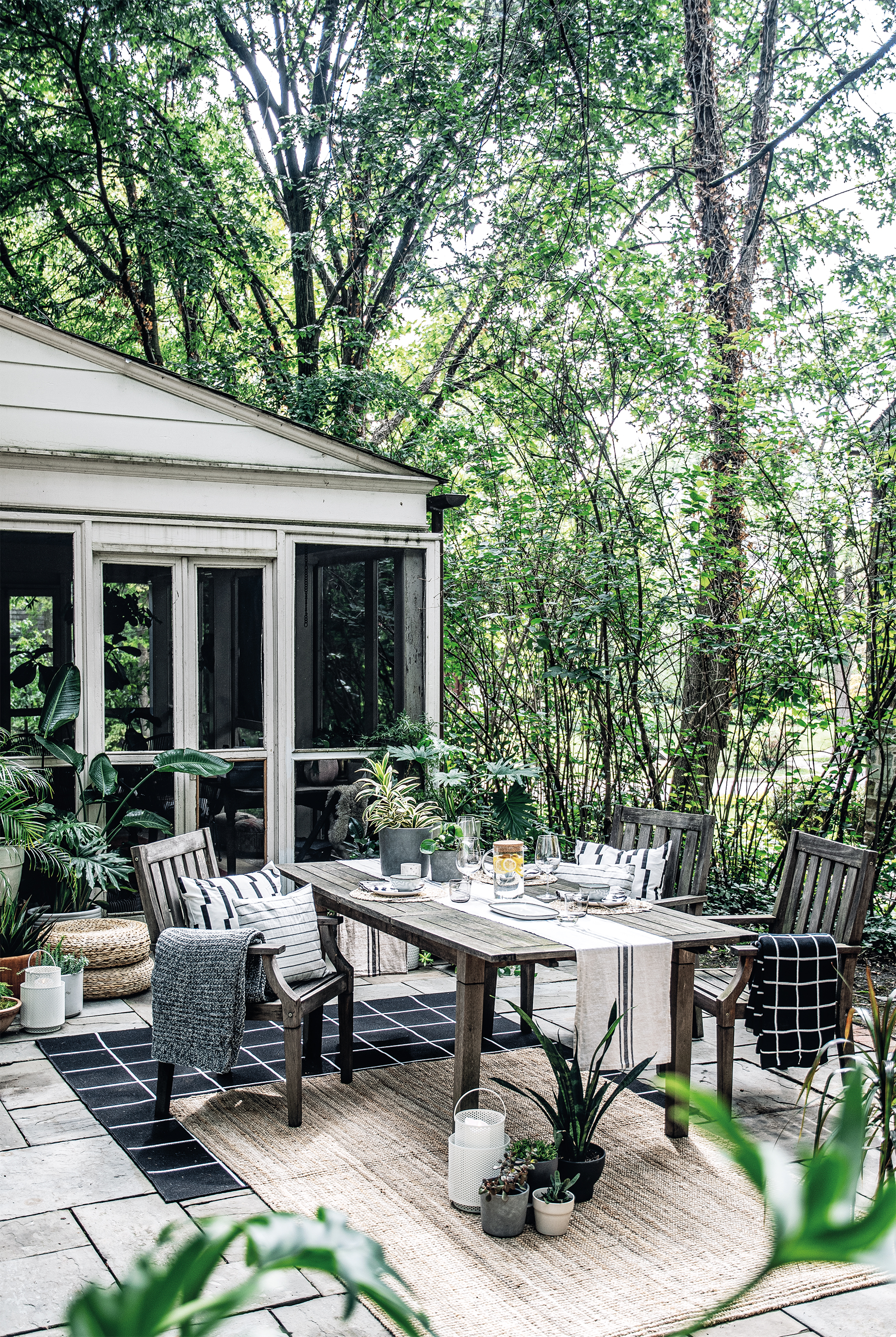
Why You Need to Bring Your Houseplants Outside Now—Here’s How to Do It Right
Liberate your houseplants this spring with these tips on styling your outdoor spaces, from plantfluencer Hilton Carter’s new book, Living Wild.

It should come as no surprise that before he became a social media “plantfluencer” with a thriving plant styling business, multiple books to his name, and a product line at Target, Hilton Carter honed his creative skills in Los Angeles, earning an MFA in film at the ArtCenter College of Design. In the lush cinematic photographs of plants he posts on his Instagram, @hiltoncarter, each plant plays the role of a character on the stage of whatever room Carter has exactingly placed it in. The principles behind this dramatic staging are to be found in his new book, Living Wild: How to Plant Style Your Home and Cultivate Happiness. Here are Carter’s tips on how to bring your houseplants outside and turn your outdoor space into an extension of your home as winter turns to spring.

From “Living Wild: How to Plant Style Your Home & Cultivate Happiness” by Hilton Carter, CICO Books; Photographs by Hilton Carter © CICO Books 2023
Hilton Carter’s Tips for Styling Plants Outdoors
1. Check the Temperature
Make sure you’re aware of the weather forecast and what the temperature highs and lows will be. A low of above 50ºF/10ºC at night is necessary before you move your plants outside.
2. Slowly Transition Some Plants Outdoors
If you have direct-sun-loving plants like cacti, succulents, ponytail palms (Beaucarnea recurvata), or crotons, you’ll want to gradually relocate them to sunny outdoor spots. Try placing them on the eastern side of the house for a week or so before moving them to the south or west side of your home for the rest of the season.

From “Living Wild: How to Plant Style Your Home & Cultivate Happiness” by Hilton Carter, CICO Books; Photographs by Hilton Carter © CICO Books 2023
3. Move Plants in and out First
Acclimatize plants slowly by bringing them outdoors under a shaded area for a few hours and then back inside for a few hours, repeating this step for two to three days before leaving them outdoors for the season.

From “Living Wild: How to Plant Style Your Home & Cultivate Happiness” by Hilton Carter, CICO Books Photographs by Hilton Carter © CICO Books 2023
4. Keep the Light
The type of light your plants require indoors will still be the case outdoors. If your houseplants thrive in bright, indirect light, placing them in dappled or lightly shaded areas will be perfect. Any north-facing area of your exterior will work.

From “Living Wild: How to Plant Style Your Home & Cultivate Happiness” by Hilton Carter, CICO Books Photographs by Hilton Carter © CICO Books 2023
5. Be Mindful of Wildlife
Beware of local wildlife that might like the taste of your houseplants. Plants like Calathea and Alocasia are tempting snacks for rabbits and deer.
6. Pick a Spot Indoors for Later
If you’ve purchased a plant during spring or summer and have kept it outside all season, make sure to have a plan for its position once it has to come indoors.

From “Living Wild: How to Plant Style Your Home & Cultivate Happiness” by Hilton Carter, CICO Books; Photographs by Hilton Carter © CICO Books 2023
We only recommend things we love. If you buy something through our site, we might earn a commission.
Read the Current Issue Here!
Get one year of Sunset—and all kinds of bonuses—for just $24.95. Subscribe now!
